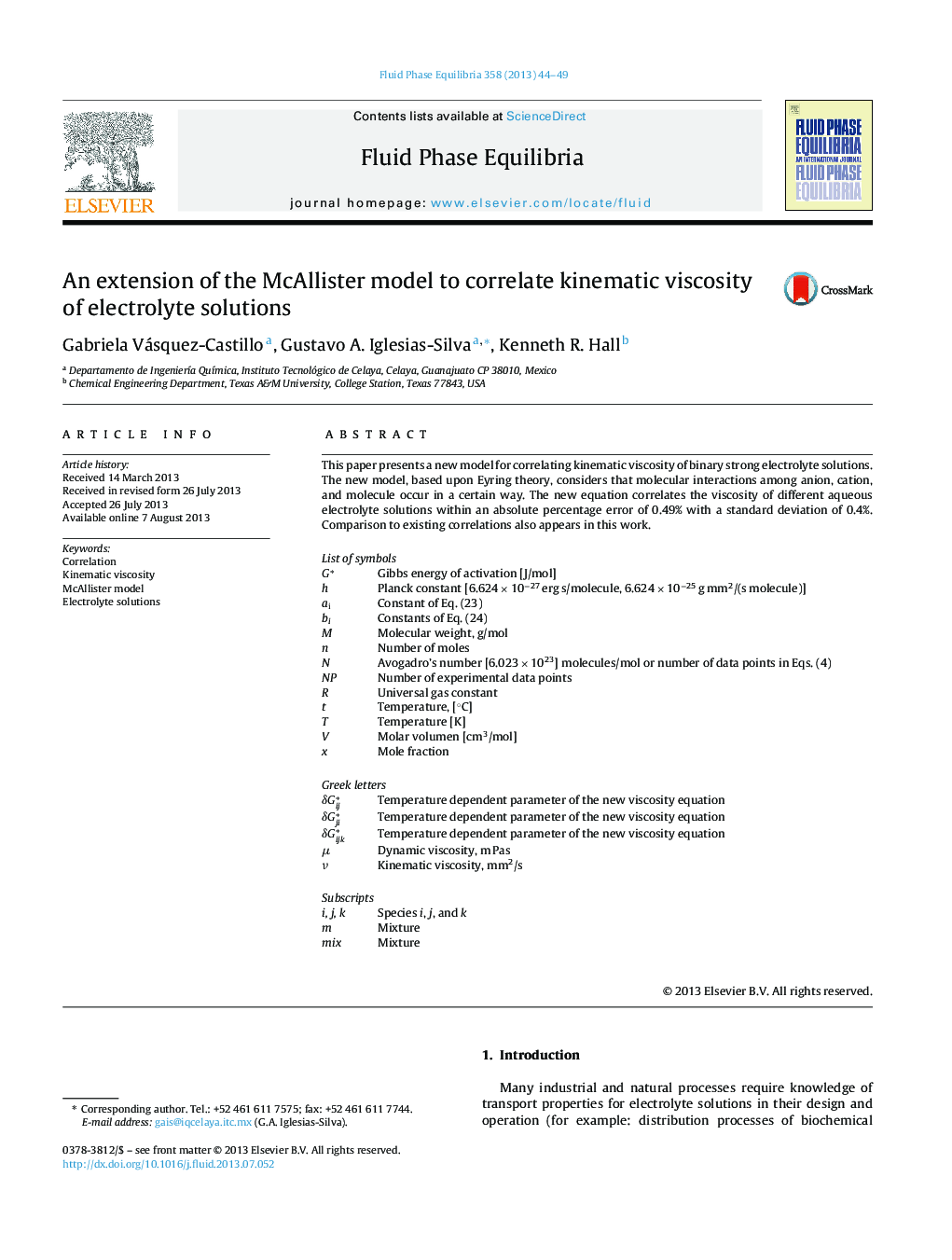| Article ID | Journal | Published Year | Pages | File Type |
|---|---|---|---|---|
| 203251 | Fluid Phase Equilibria | 2013 | 6 Pages |
•We extent the McAllister model for the correlation of the kinematic viscosity of electrolyte solutions.•We consider molecular interactions and assumptions in the activation Gibbs energy.•We compare the new equation with commonly used correlations for the kinematic viscosity of electrolyte solutions obtaining a good agreement.•We have included the temperature dependence of the viscosity in the new model.•We have tested the extrapolation behavior of the new correlation.
This paper presents a new model for correlating kinematic viscosity of binary strong electrolyte solutions. The new model, based upon Eyring theory, considers that molecular interactions among anion, cation, and molecule occur in a certain way. The new equation correlates the viscosity of different aqueous electrolyte solutions within an absolute percentage error of 0.49% with a standard deviation of 0.4%. Comparison to existing correlations also appears in this work.List of symbolsG*G*Gibbs energy of activation [J/mol]hPlanck constant [6.624 × 10−27 erg s/molecule, 6.624 × 10−25 g mm2/(s molecule)]aiConstant of Eq. (23)biConstants of Eq. (24)MMolecular weight, g/molnNumber of molesNAvogadro's number [6.023 × 1023] molecules/mol or number of data points in Eqs. (4)NPNumber of experimental data pointsRUniversal gas constanttTemperature, [°C]TTemperature [K]VMolar volumen [cm3/mol]xMole fractionGreek lettersδGij*Temperature dependent parameter of the new viscosity equationδGji*Temperature dependent parameter of the new viscosity equationδGijk*Temperature dependent parameter of the new viscosity equationμDynamic viscosity, m PasνKinematic viscosity, mm2/sSubscriptsi, j, kSpecies i, j, and kmMixturemixMixture
Graphical abstractFigure optionsDownload full-size imageDownload as PowerPoint slide
